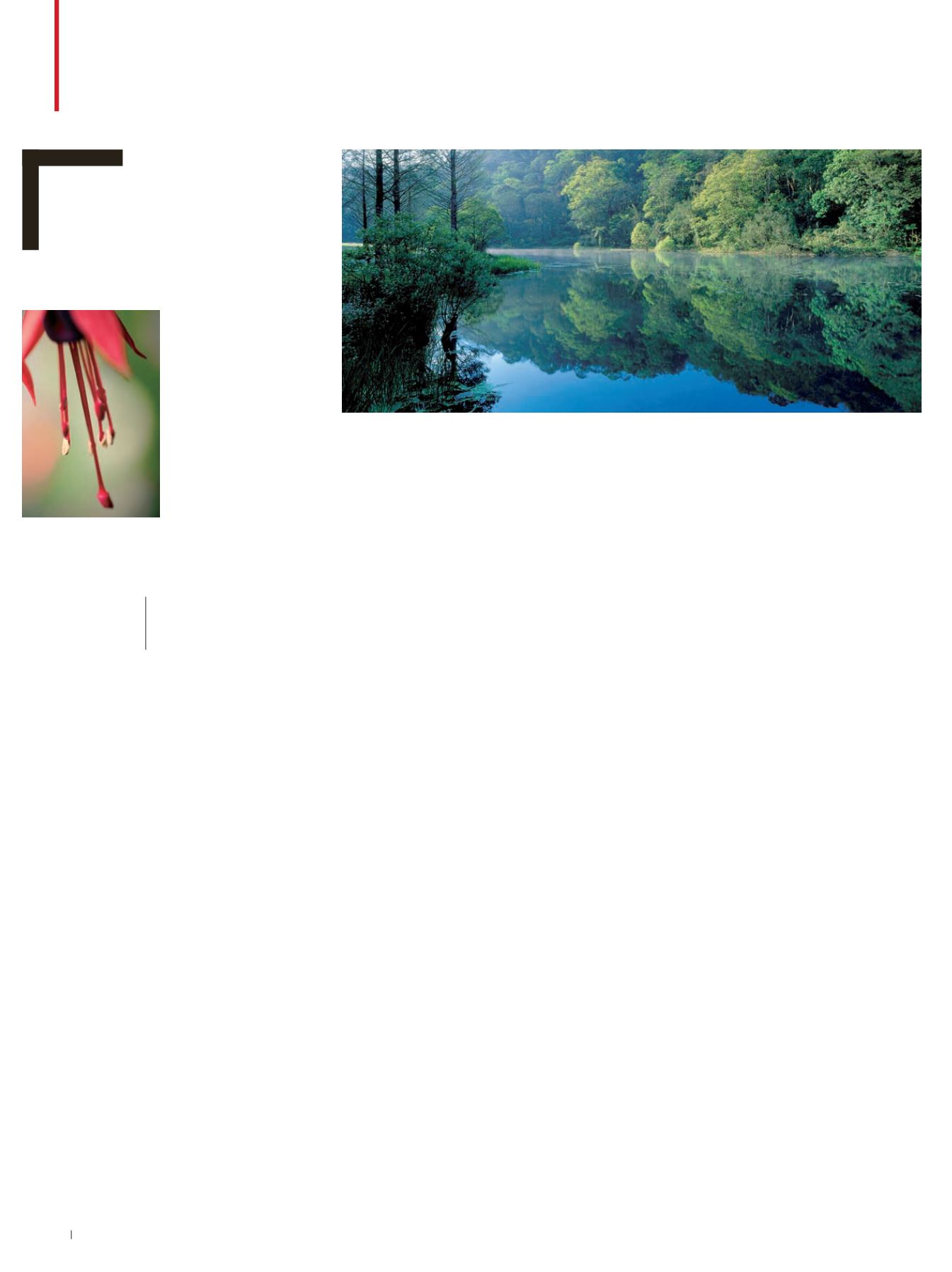
Located on the edge of
Yilan County, Fushan
Botanical Garden is
home to 515 plant spe-
cies plus a wide variety
of animals.
Ѭໝί֝ᚆᗙඦٙ၅ʆಔ
ي
d
މ
515
၇ಔ
ي
ٙ͛
ڗ
ήdΝࣛɰ̳ԃəεᅵ
ʷٙਗ
ي
f
As the crow flies, Fushan Botanical Garden is just 33km from
Taipei 101. However, because there is no road from the Taipei
side, visitors must come through Yilan County’s Yuanshan
Township. No buses go near the entrance, and the road is
sometimes closed after typhoons.
In addition to driving themselves to the garden, visitors
must also apply for permission to enter at least 35 days in
advance. The daily limit for tourists is 500 on weekdays and 600
on weekends and holidays. Applications can be made online at
fushan.tfri.gov.tw
.
The 409.5 hectares of Fushan Botanical Garden are 600-
800m above sea level. The climate is therefore cooler and wetter
than downtown Taipei’s. Mist is common; visitors should bring
umbrellas or rainproof jackets, even if the capital is bone dry.
The garden is divided into four zones: Natural Classroom,
Tree Exhibition, Forest Discovery, and Plants and Human Life.
The path that links them is a little over 3km long and takes
visitors past a pond where egrets prey on
Candidia barbatus
, a
unique-to-Taiwan minnow.
Inside Fushan, as in most of Taiwan’s botanical gardens, the
labels attached to plants and trees usually provide the Chinese and
scientific names only. To get more out of a tour, visitors should carry
a field guide, or stop frequently so they can google names on their
smartphones. Engaging a guide for Fushan or Taipei Botanical
Garden is possible, but difficult unless a Chinese-speaker is enlisted
well in advance to fill in forms and make phone calls.
According to TFRI, Fushan is home to 515 plant species.
Some are far from rare, such as the nettle Taiwanese people call
“biting people cat” (
Urtica thunbergiana
), and Japanese holly-
grape (
Mahonia japonica
). The seeds, roots, and stems of the
latter are used in traditional medicine.
There are several fern species, plus specimens of Taiwan’s
16 native rhododendron species. Between them they produce
flowers of lilac, maroon, pink, purple, red, white, and yellow.
March and April are the best months to see them in bloom.
Several trees’ scientific names reveal their local origins.
One is
Phoebe formosana
, sometimes called the Taiwan Phoebe.
Another is
Quercus tarokoensis
(the Taroko oak), which is native
to mid-level mountain areas near Taroko Gorge. A third is a kind
of laurel,
Litsea morrisonensis
, named for Mount Morrison. That
peak, the highest in Taiwan, is now better known as Mount Jade.
The green-fingered will adore all of this flora, but for
others, Fushan’s real stars are its insects, which include a
dazzling array of crane flies, dragonflies, robber flies, weevils,
and other beetles.
Because Fushan is far from major human settlements, the
area has a sizable animal population. Mammal activity peaks
around dawn and dusk, yet tourists — who are only allowed in
between 9am and 4pm — may well glimpse a Formosan
macaque, or perhaps even a Reeves’s muntjac. The former is
Taiwan’s only monkey species; the latter a small deer that yaps
like a dog.
Only the luckiest outsiders get to see other creatures, but
evidence of nighttime visits by pangolins and wild boars is
everywhere. Pangolins scratch out soccer-ball-sized holes while
seeking ants and termites. Wild boars dig up large areas of
topsoil while hunting for the long worms they like to feed on.
PHOTOGRAPHY: TOP PHOTO GROUP / GETTY IMAGES(EYE EM) / IMAGE TAIWAN
Taiwan has twice
as much forest as
Norway.
Yilan
֝
ᚆ
40
enVoyage
Taiwan
Travels


